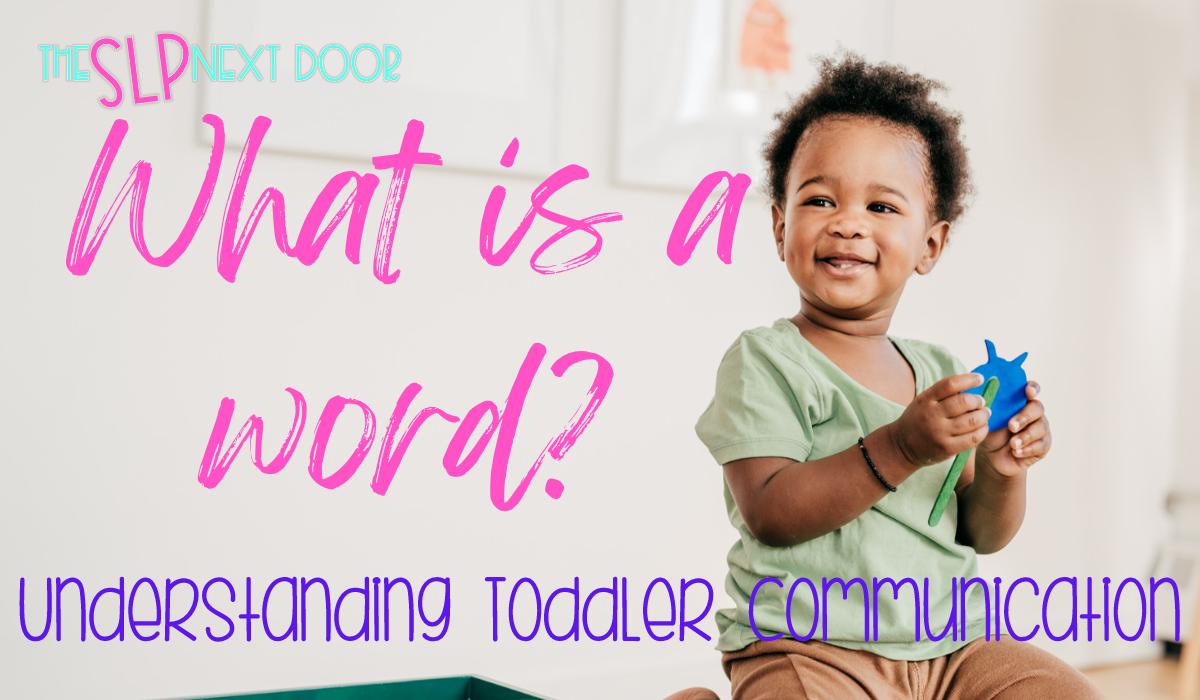One of the most important questions for parents during early intervention speech and language evaluations is, “How many words does your child say?” This simple question is important. The answer will impact how speech therapy goes. But what is a “word” in the world of speech therapy for toddlers?
Words in Toddlers
To get technical, Webster’s Dictionary defines a word is “a speech sound or series of speech sounds that symbolizes and communicates a meaning usually without being divisible into smaller units capable of independent use.”
When it comes to speech therapy for toddlers, we keep the definition a bit more simple; words are the expressions that toddlers use consistently and intentionally for communication.
What counts as a word?
Now that we know what a word is, the question becomes what counts as a word? For early communicators, it means a variety of expressions, including:
- animal and/or environmental sounds: “moo”, “vrrm”, “uh-oh”, “bam!”
- partial words and/or word approximations: “ba” for bottle, “da” for dad, “nana” for banana
- complete words: mama, dada, ball
- gestures: cupping hand around mouth to indicate drink, reaching hands and saying “uh” for up,
- visual communication: any visual supports a child uses to communicate such as AAC devices or choice boards
- sign language: signing “mom”, requesting “more” using the sign
Word Approximations & Partial Words
You’ve probably noticed a toddler using a shortened form a word. Before a child turns 4 years old, they progress through developmental phonological errors. Most toddlers progress through these developmental errors and go on to produce the correct word structure. To encourage this development, repeat words back to a toddler in their full form.
Toddler says “ba” for bottle
Response: oh! you want a bottle!
It’s important to remember that you aren’t expecting the toddler to say the entire word back to you- you’re just exposing them to the correct structure of the word. Most phonological errors should be resolved by the time a child turns 4.
Gestures, Visual Communication, and Sign Language
Toddlers often use non-verbal means of communication, such as pointing, nodding, or using gestures. These forms of communication also count as words in the toddler’s vocabulary. If a child is using sign language or visual communication systems to express their needs or desires, these should be recognized as words.
Counting words includes a wide range of verbal expressions, gestures, visual communication, and sign language. So, the next time someone asks, “How many words does your child say?” remember that their vocabulary encompasses more than just spoken words.
Want to know more about toddler development? Check out my handbook, Communicate & Connect! This SLP Early Intervention handbook is perfect for your early intervention speech and language caseload! Backed by research, each topic includes handouts that can be used as a quick reference for SLPs or printed handouts to be shared with parents and caregivers.



